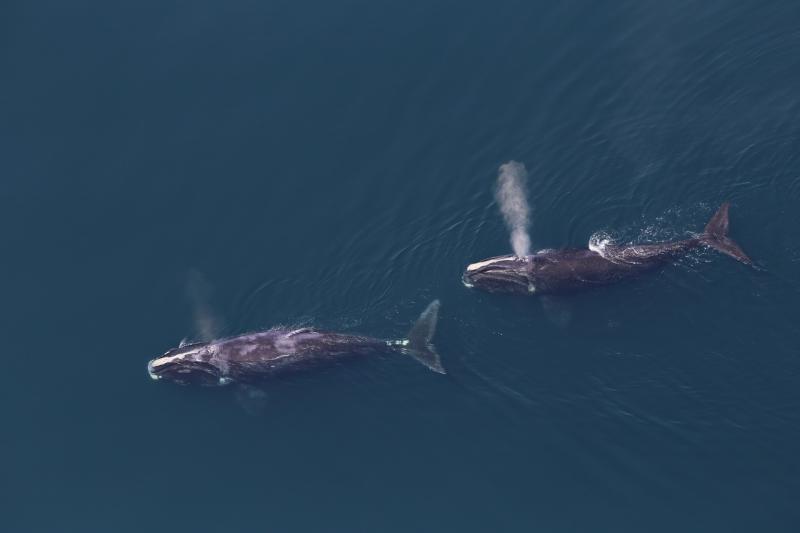
Study finds offshore wind areas a biologically important habitat for whales and dolphins
by NOAA Fisheries 4 Dec 2023 18:13 UTC

Study finds offshore wind areas a biologically important habitat for whales and dolphins © NOAA Fisheries
Scientists use passive acoustic monitoring to create a baseline soundscape off the southern New England coast to help evaluate the potential impacts of offshore wind development on cetacean species.
Scientists at our Woods Hole Laboratory used passive acoustics to create a baseline soundscape before wind developers started construction off the coast of southern New England. Their findings were recently published in the ICES Journal of Marine Science.
"This is the first study to collect soundscape data directly related to offshore wind energy development in U.S. waters," said Sofie Van Parijs, lead author on the study and science center passive acoustic program lead. "Similar baseline data has been collected in European waters, but it focused on harbor porpoises and delphinids—oceanic dolphins—and single species questions."
Van Parijs and her team used seven bottom-mounted acoustic recorders and high-frequency click recorders. They collected underwater sound data in and around nine separate wind lease areas. These areas spanned state waters from Massachusetts to Rhode Island and into U.S. federal waters. Four locations recorded continuously for more than 2 years, while the others varied from 4 to 9 months. Between January 2020 to November 2022, they collected data on:
- Species' presence
- Vessel activity
- Ambient sound levels
They found eight species and one taxonomic family (delphinids) of cetaceans (family that includes whales, dolphins, and porpoises) were present a minimum of 9 months of the year. The eight species were:
"The species showed differences in seasonal presence, with some present in the spring and fall, others in the summer and/or winter. This shows that this area is an important habitat for activities such as feeding and socializing throughout the year. During all of this time these species are exposed to considerable vessel noise."
Where there's vessel noise, there's vessel activity. Vessel strikes are one of the biggest threats to cetaceans, including the endangered North Atlantic right whale. The team will be able to compare the baseline data to future vessel sound data collected during turbine construction and operational periods. This will help identify any increased risk for vessel strikes.
"These standardized baseline data will enable precautionary management decisions to be made by guiding the timing of seasonal closures, risk mitigation measures, and allow future evaluation of potential impacts."